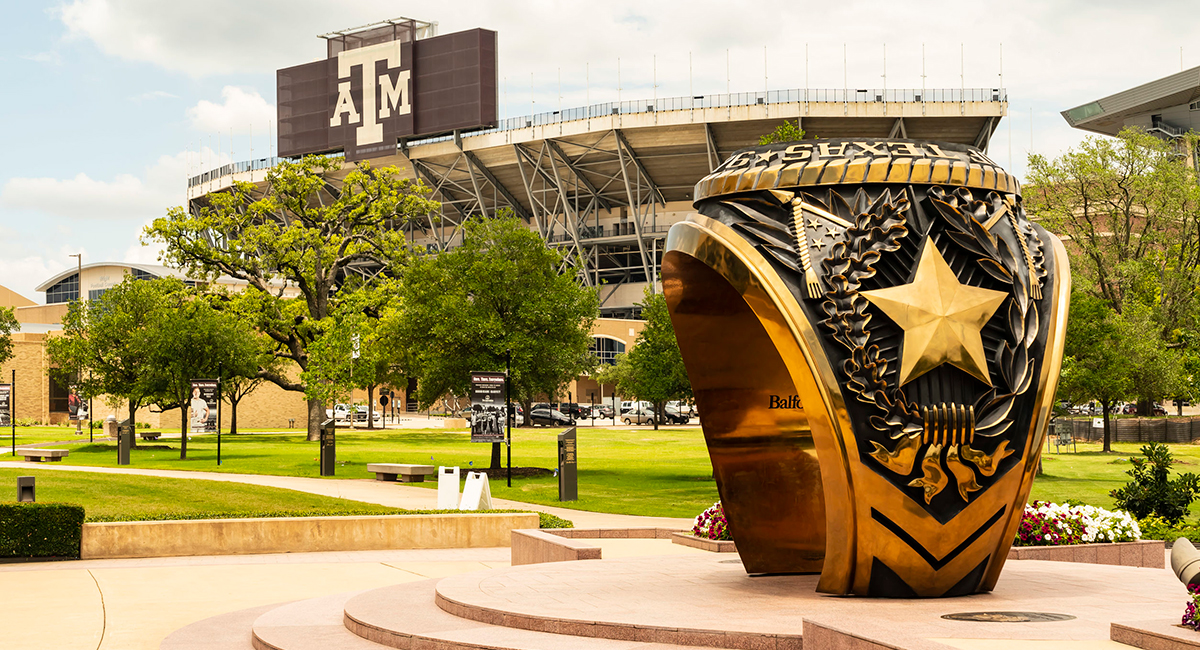It seems to me that Texas always likes to try to outdo everyone else—think of outsized political personalities like Lyndon B. Johnson. Maybe the state has something of an inferiority complex that it thought it could remedy by adroitly using its massive oil revenues. Two large direct beneficiaries of those revenues are the University of Texas (UT) and Texas A&M University. Those black gold handouts have led to some interesting spending habits. While most flagship state universities with high reputations will pay their presidents a $700,000 or $800,000 a year, many Texas state universities, schools like the University of Houston or Texas Tech University, typically pay their top official well over $1 million annually, apparently thinking higher pay will get better results. And Texas clearly shells out for the best.
But A&M has gone over the top even by Texas standards, paying their longtime but just fired football coach, Jimbo Fisher, $75 million to disappear—to stop coaching at A&M! That is the amount of money on his contract that he is to be paid over the next eight years or so—whether he works at A&M or not. Mr. Fisher is free to go coach at another school, for no doubt millions annually.
Mr. Fisher’s sin? Did he verbally abuse or sexually molest players or staff? Did he steal money? No. His huge deficiency: while he won a sizable majority (64 percent) of the games (even this year), he has not won all—or nearly all—of them. As Jason Gay of the Wall Street Journal so nicely put it, “College football has long been an irrational circus thanks to the mammoth television deals of booster gazillionaires making moguls out of irritated-looking men in visors...” The A&M boosters seeking pigskin immortality, like similar groups at other schools, try to defy the immutable Iron Law of Sports: anytime someone wins a game, someone else loses. In the entire world of college sports, teams collectively win precisely 50 percent of the games in which they compete.
The economic concept of opportunity costs is relevant here. For $75 million, Texas A&M could generously permanently endow 15 or 20 professorships in the fine arts or humanities, and 10 or more in higher paying STEM disciplines, business, or economics. They could greatly enhance the national prestige of several academic departments. While A&M is not at the top of the football rankings this year, neither is it in overall academic reputation. I looked at three magazine national academic ratings, done using varying criteria. Texas A&M ranked 38th best with the Wall Street Journal, 47th with US News, and 50th with Forbes. I would characterize that as an indication that A&M is a “very good quality” school, but not a “top” school. There are many state universities—Cal Berkeley, UCLA, Michigan, Virginia, etc.—that rankers think have better reputations, including A&M’s archrival UT. With UT, A&M shares in oil money worth literally tens of billions, so why doesn’t it use its share of it to buy academic greatness?
Indeed, because of its outsized and almost irrational fixation with achieving athletic excellence, schools like A&M promote an image of themselves as being more interested in brawn rather than in brains. Don’t they appear far more interested in attaining excellence in running and catching balls rather than in excelling in the discovery of new medicines or AI technology, or more generally, the attainment of superior insights into how the human condition can be improved? In economist jargon, aren’t there “negative externalities” with having an obsession with football? No one thinks of Michigan or Cal or Virginia as “jock” schools—but can the same be said about A&M? Likely not. It’s sports-above-all image hurts the many fine professors and students at A&M excelling in the dissemination, discovery, and acquisition of knowledge.
I enjoy college sports myself, having attended both a college football and basketball game in the past week. But it is at least 90 percent entertainment, at most 10 percent a legitimate activity contributing to the enhancement of leadership skills and workplace discipline for a relatively small number of students. In no other country is there such an emphasis on collegiate sports. To be sure, not all schools are like A&M. No one is complaining about outsized athletic spending at MIT, the University of Chicago, or Cal Tech, not to mention liberal arts colleges where sports are conducted more modestly.
I suspect America’s big-time college athletics is not sustainable for much longer in its current form. The vicious financial exploitation of star athletes has been only partly offset by new name, image, and likeness rules. Attendance at games in some locales has slumped, especially among students who are the rationale for the teams in the first place. The threat of successful big lawsuits over-long term health damages to former athletes is growing. Even changing sport interests among younger children (favoring soccer over football) may play a role. But for the moment, football is king, and the Jimbo Fisher’s of the world are laughing all the way to the bank.












